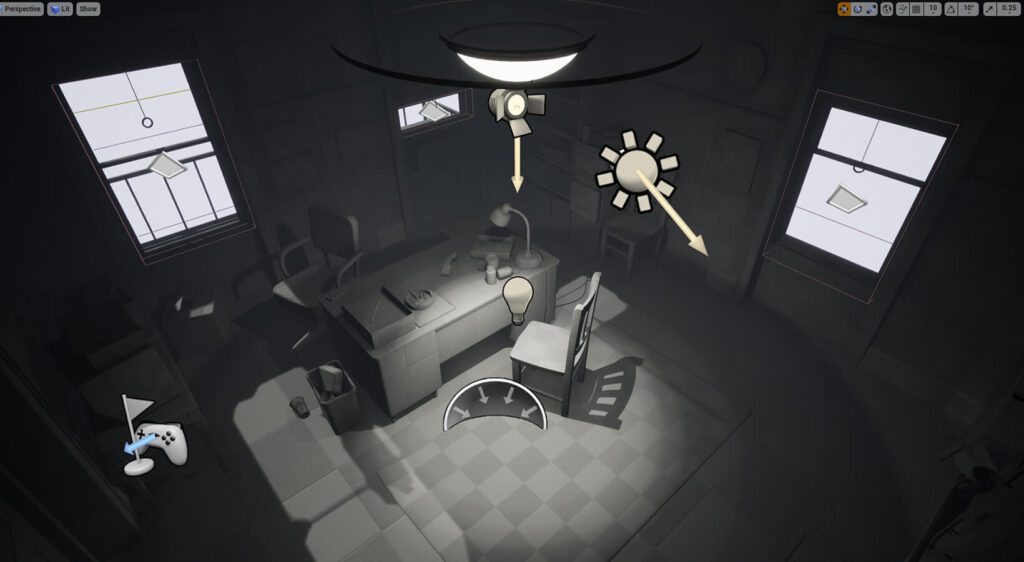Unreal Engine is a popular and powerful tool for game development. The process of creating a game using Unreal Engine involves several stages, including concept and planning, game design and prototyping, art and sound design, game development and testing, and release and support. Unreal Engine offers built-in templates and presets, visual scripting through Blueprints, a library of assets, a robust toolset for creating 2D and 3D assets with lighting and post-processing effects, and an audio toolset for creating realistic soundscapes. The platform also has built-in testing suites and tools for releasing updates and patches.
Exploring the game development process through Unreal Engine
Game development is not an easy task, and it requires a lot of hard work and dedication to create a game worth playing. There are many different tools and technologies available to game developers, but one of the most popular and powerful is the Unreal Engine. In this article, we will explore the process of creating a game using Unreal Engine, from the initial concept to the final product.
Stage 1: Concept and Planning
The first stage of game development is the concept and planning stage. This involves coming up with an idea for the game and deciding on the game’s mechanics, story, and overall theme. This stage is critical as it lays the foundation for the entire development process.
When using Unreal Engine, developers can use a variety of tools to help plan the game. Unreal Engine has built-in templates and presets that can be used for various game genres, such as first-person shooter, platformer, and RPG. These templates can be modified to fit the needs of the game concept and help to create a basic framework for the project.
Developers can also use external tools to help plan the game, such as mind-mapping software or concept art. These tools can help to visualize the game world and give a better understanding of the game’s design and mechanics.
Stage 2: Game Design and Prototyping
The second stage of game development is game design and prototyping. This is where developers start to create the game mechanics and begin building the game world. In Unreal Engine, this stage involves creating a detailed design document and creating a basic prototype of the game.
Unreal Engine has a visual scripting system called Blueprints that allows developers to create game logic without needing to write code. This system makes it easy to create prototypes and test game mechanics quickly. Developers can also use Unreal Engine’s vast library of assets to help build the game world, including terrain, props, and character models.
During this stage, it is essential to iterate on the game mechanics and design continuously. Developers should create several prototypes to test different ideas and see what works best for the game. This will help to refine the game mechanics and ensure that they are enjoyable and fun to play.
Stage 3: Art and Sound Design
The third stage of game development is art and sound design. This is where developers create the visual and auditory elements of the game. Unreal Engine has a robust toolset for creating both 2D and 3D assets and allows for full control over lighting and post-processing effects.
Sound design is also essential to creating an immersive game experience. Unreal Engine has an audio toolset that allows developers to create realistic sound effects and ambient soundscapes.
Stage 4: Game Development and Testing
The fourth stage of game development is game development and testing. This is where developers work on the final game build and implement all the game mechanics, art, and sound into a cohesive package. During this stage, it is critical to test the game continuously to ensure that it is playable and enjoyable for the player.
Unreal Engine has a built-in testing suite that allows developers to test their game in real-time and quickly identify any issues or bugs. Developers can also use external tools, such as testing frameworks and user testing, to ensure that the game is stable and enjoyable.
Stage 5: Release and Support
The final stage of game development is release and support. This is where developers prepare the game for release and provide support after the game is released. In Unreal Engine, releasing a game is as simple as exporting the game to the desired platform, such as PC, Xbox, or Playstation.
Once the game is released, developers must provide support in the form of bug fixes, patches, and updates. This is to ensure that the game remains stable and enjoyable for the player. Unreal Engine has built-in tools for releasing updates and patches, and developers can use external tools such as Steamworks and Xbox Live to manage their game’s release and support.
Conclusion
The game development process is complex and challenging, but using tools like Unreal Engine can help to streamline the process and make it easier to create a great game. By following the stages outlined in this article, developers can create a game from concept to release and provide a memorable and enjoyable experience for the player.
